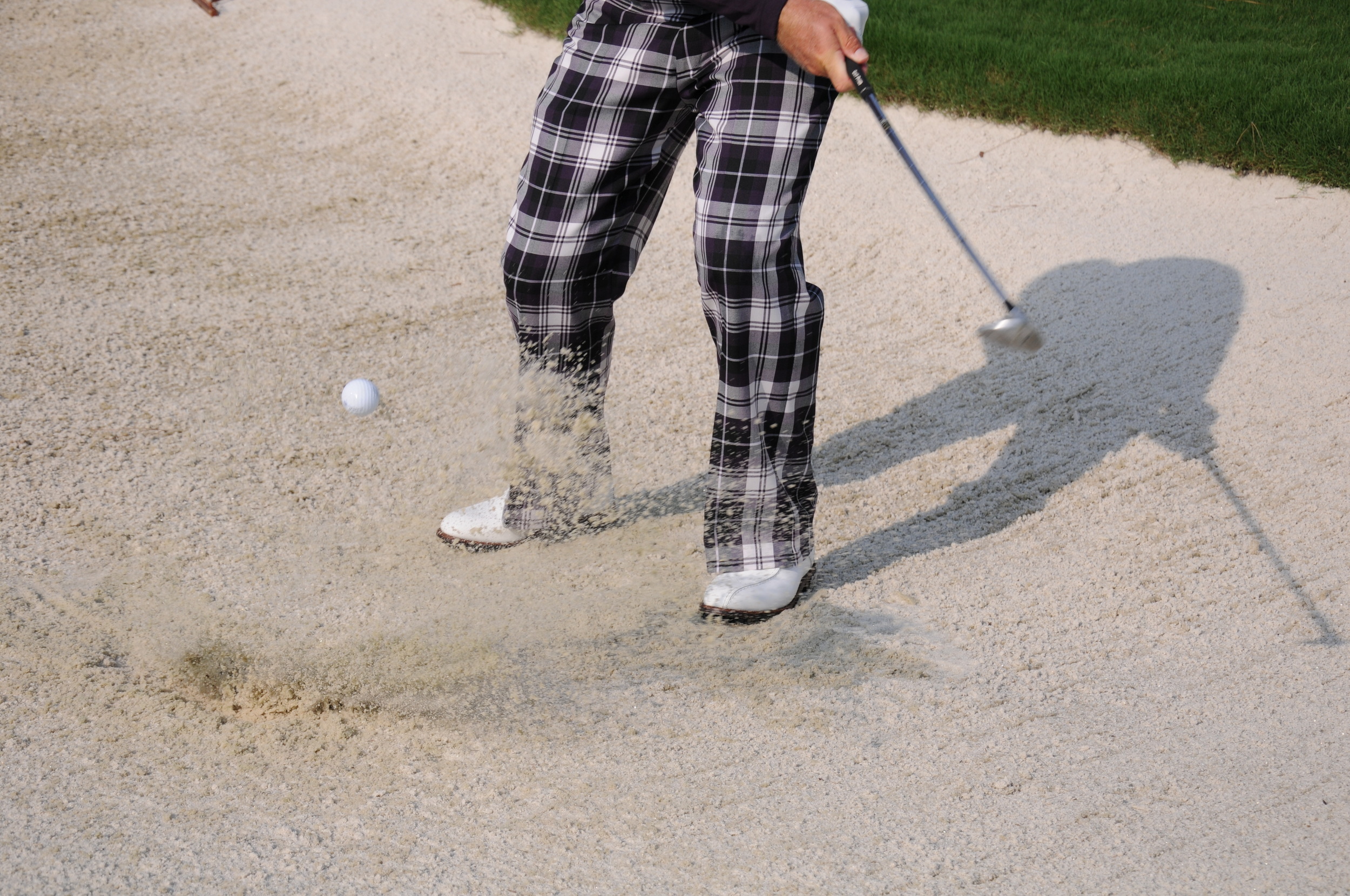In order to be a great bunker player you need more than one shot. How often have you found yourself in the sand, twenty feet from the hole, and you need to hit a high, soft, spinnning shot to have any chance of getting up and down? Or found yourself sixty feet from the target and you now need a lower, running type bunker shot in order to reach the hole? You need to learn these two shots!

The first shot is a high velocity, high trajectory, high spin shot. It is most often struck with the most lofted club in the bag. In this situation the ball needs to come to a screeching halt very soon after landing, due to the fact that you have very little green to play with.
Here is how to play the shot:
- Using your most lofted club, open the face as much as possible. You should feel as if you could balance a glass of water on the face of the club at address - take note of the picture above.
- The velocity and speed in the swing is what gets the ball high and spinning, so even though this may be a short shot it requires an aggressive approach. Hit it hard!
- Going through impact try to feel the hands scoop under the ball. The club head releases under and thus the club face stays open through the hit. This is an important element to this shot as it allows the golfer to hit hard, yet when releasing the club properly, the ball goes up versus far.
- Practice this shot from good lies off of a slight up slope in the sand. While hitting the shot as hard as you can try to see how high and short you can make the ball travel.

The other shot is a low velocity, low trajectory, low spin shot. It should most often be played with the second most lofted club in the bag. If you have an LW it would be the SW, or if you only have an SW then you should use the PW. In this situation the shot needs to traverse a large portion of either flat or downhill green. There is ample opportunity for the ball to roll like a putt!
Play the shot this way:
- Using a lesser lofted club the stance should be of average width and the ball position is still forward of center.
- The clubface remains open, yet to a lesser degree than the above shot.
- This shot is played almost in slow motion as there should be very little speed in the swing. I often call this the 'dump and run' shot, as it should just get out the bunker, land early on the green and roll to the hole as if it were a putt.
- The hands should be light throughout the swing and it is okay to actually roll the face a little through impact. This serves to lower the shot further and causes the ball to release more.
- Do not attempt this shot when your ball is lying on an upslope! An upslope requires a more aggressive swing and that robs the ball of its ability to stay low.
- Practice is vital for this shot as it tends to take a few tries before sensing the correct speed of the swing.
With a few minutes spent experimenting with the above suggestions in the sand you will soon start to lose some of the angst we have all experienced when stepping into a bunker. Give it a try and please feel free to let me know your thoughts.
Additional Resources:
How to Hit Great Bunker Shots
Luke Donald's Buried Lie












